GoPro Hero 10 Black
Two-minute review
The GoPro Hero 10 Black is the latest in a long line of Hero action cameras that stretches all the way back to 2005. It's the most polished, powerful GoPro so far thanks to its new GP2 processor, but it's also only a relatively minor upgrade on its Hero 9 Black predecessor.
Every so often GoPros make a big leap forward: the GoPro Hero 5 Black was waterproof without needing a case, and the Hero 7 Black introduced HyperSmooth stabilization. Despite its momentous name, the Hero 10 Black isn't one of those models. But it does refine (and fix) most of the new features we saw on the Hero 9 Black, while adding a sprinkling of new shooting modes and better usability.
The Hero 10 is built around the same 23MP 1/2.3in sensor as its predecessor and is waterproof down to ten meters, but it's that new GP2 processor that unlocks most its new talents. Chief among these are some new shooting modes, including new 5K/60p, 4K/120p and 2.7K/240p options. The latter two are fun, slo-mo affairs that are perfect for social media cut-scenes or b-cam footage. Particularly as GoPro's revamped Quik app will happily do some of the editing for you.
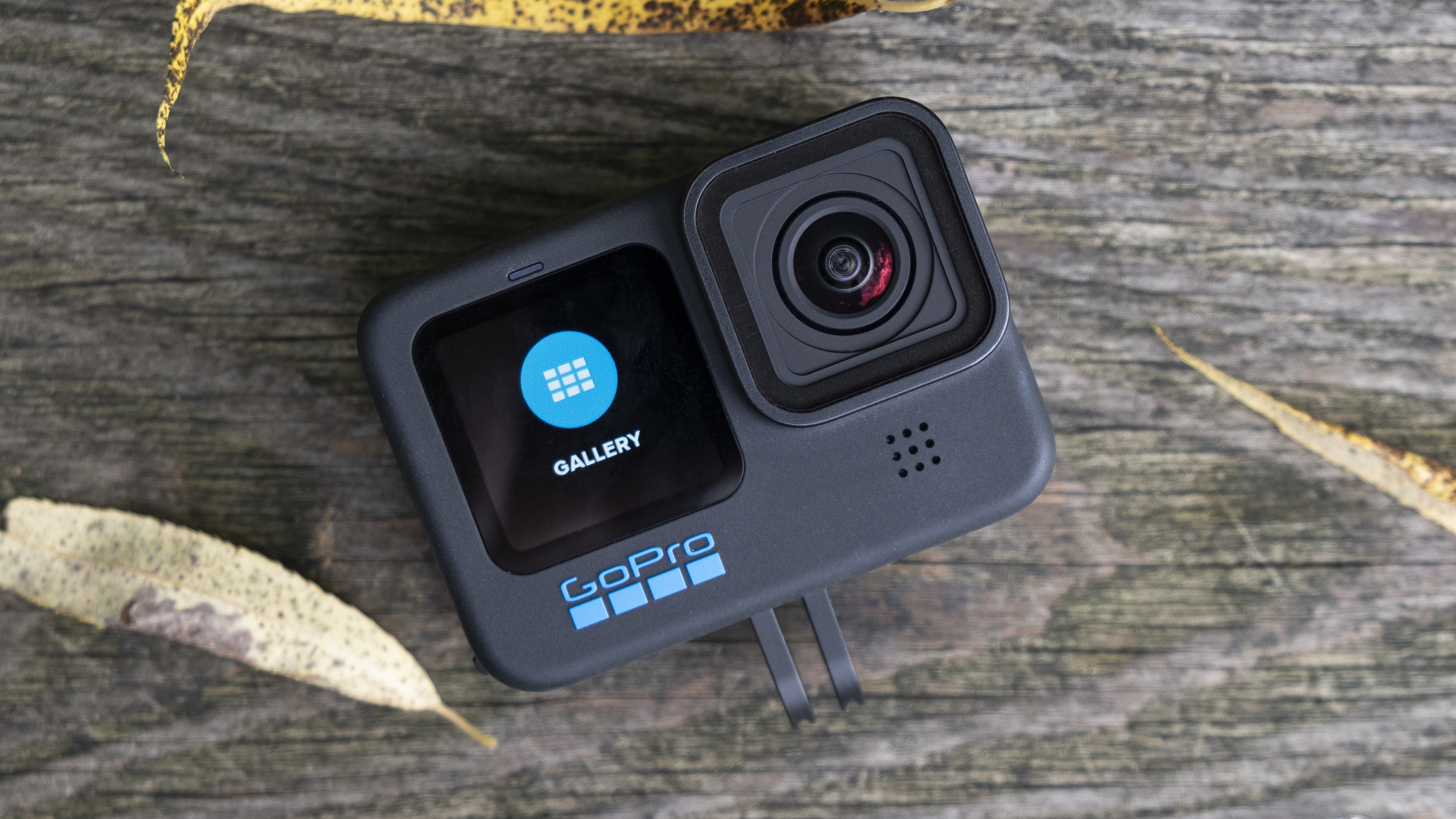
Other improvements include a much more responsive touchscreen interface (the Hero 9 Black fell down here), a handy new wired data transfer mode for phones, and some under-the-hood image quality boosts including local tone mapping and improved low-light noise reduction. There are certainly some minor improvements to video quality as a result, but the Hero 10 Black can still only do so much with its small 1/2.3in image sensor.
More significant for most people will be that HyperSmooth 4.0 remains the best action camera video stabilization around, while watersports fan will enjoy the effective new hydrophobic coating on its toughened-up lens cover.
It's a shame that the Hero 10 Black hasn't move up to a larger sensor like the Insta360 One R 1-Inch edition, while its recent moves into webcam and livestreaming continue to come with limitations on resolutions (still only 1080p) and platform support (although it is now possible to livestream with HyperSmooth stabilization).
But despite its relatively conservative upgrades, the GoPro Hero 10 Black does nicely refine the image quality strides made by the Hero 9 Black, and is now the most user-friendly, powerful action camera you can buy – if not exactly the best value.
GoPro Hero 10 Black price and release date
The GoPro Hero 10 Black is available to buy now for $399 / £379 / AU$529 if you sign up for a GoPro Subscription, or for $499 / £479 / AU$669 on its own. It'll also be available in India for Rs 54,500 from early November.
The GoPro Subscription, formerly known as GoPro Plus, costs $49.99 / £49.99 / AU$69.99 per year when bought separately, and you'll be set up to auto-renew annually if you buy the Hero 10 Black with a Subscription. But you can avoid that happening by cancelling the Subscription at any time during the first year.

Given that you're not obligated to renew the Subscription, it's likely the best way for most people to buy the Hero 10 Black. Included in the GoPro Subscription is unlimited cloud storage for videos and photos at full quality, automatic uploads, full access to the Quik app's editing tools, 50% off all accessories (up to ten per year), live-streaming support, and replacements for broken cameras (for a fee, depending on the camera).
The rest of the GoPro range will continue at their current prices with no models discontinued. This includes last year's Hero 9 Black ($349 / £329 / AU$529), along with the Hero 8 Black ($279 / £259 / AU$419) and GoPro Max ($399 / £379 / AU$659). All of those prices are with a GoPro subscription, but again you can also buy them on their own without one.
Design
- New hardier lens cover with water-repellant coating
- Rear touchscreen and menus are now far more responsive
- Otherwise physically identical to the Hero 9 Black
The GoPro Hero 10 Black is, physically, nigh-on identical to its predecessor. The only external difference from the Hero 9 Black is the new model's fancy blue logos on the front and side.
GoPro has made a couple of subtle tweaks, though. The big one for water sports fans is the new lens cover. This now has a hydrophobic coating, to help it repel water – and it really works. We ran the Hero 10 Black and its predecessor under a tap, and the new lens cover was significantly better at repelling water, leaving no droplets to obscure its view.
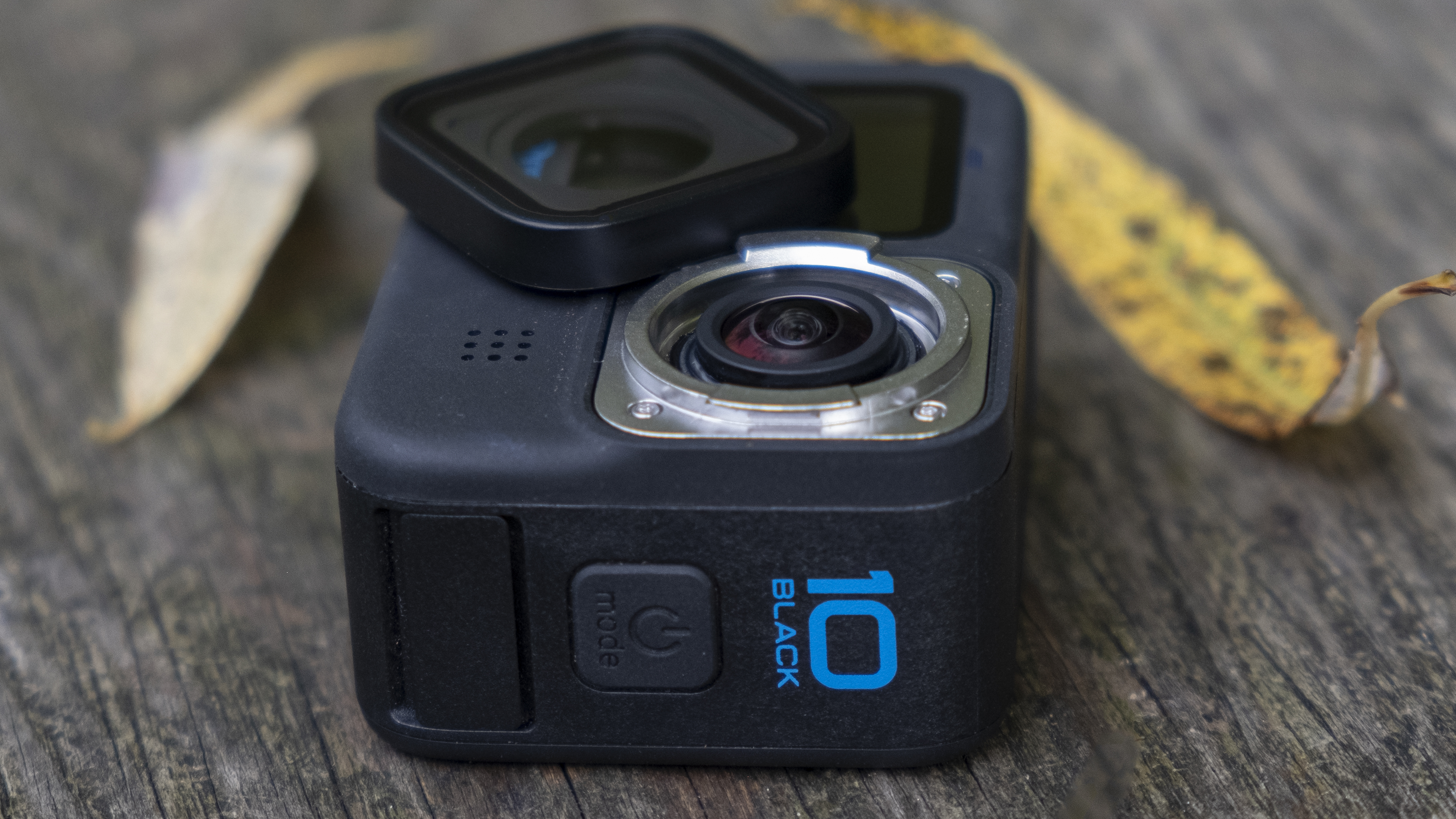
This lens cover also apparently has greater scratch resistance, which was trickier to try out on our loan sample. Still, an unplanned test when our head-mounted GoPro flew off after a heavy zip-line landing and landed in some jagged wood chips resulted in no obvious marks on the lens. Like the Hero 9 Black, this lens cover is also removable if you do get serious damage, like a direct hit from an Airsoft pellet, or want to add ND (Neutral Density) filters.
The Hero 10 Black is actually 5g lighter than its predecessor, although it's impossible to tell exactly where it's made this weight saving – and it brings no practical advantages anyway. Like before, it has folding 'fingers' for mounting it directly onto accessories in its base. These first appeared on the Hero 8 Black, and mean you don't need to fiddle around with an extra housing to bolt it onto your helmet.
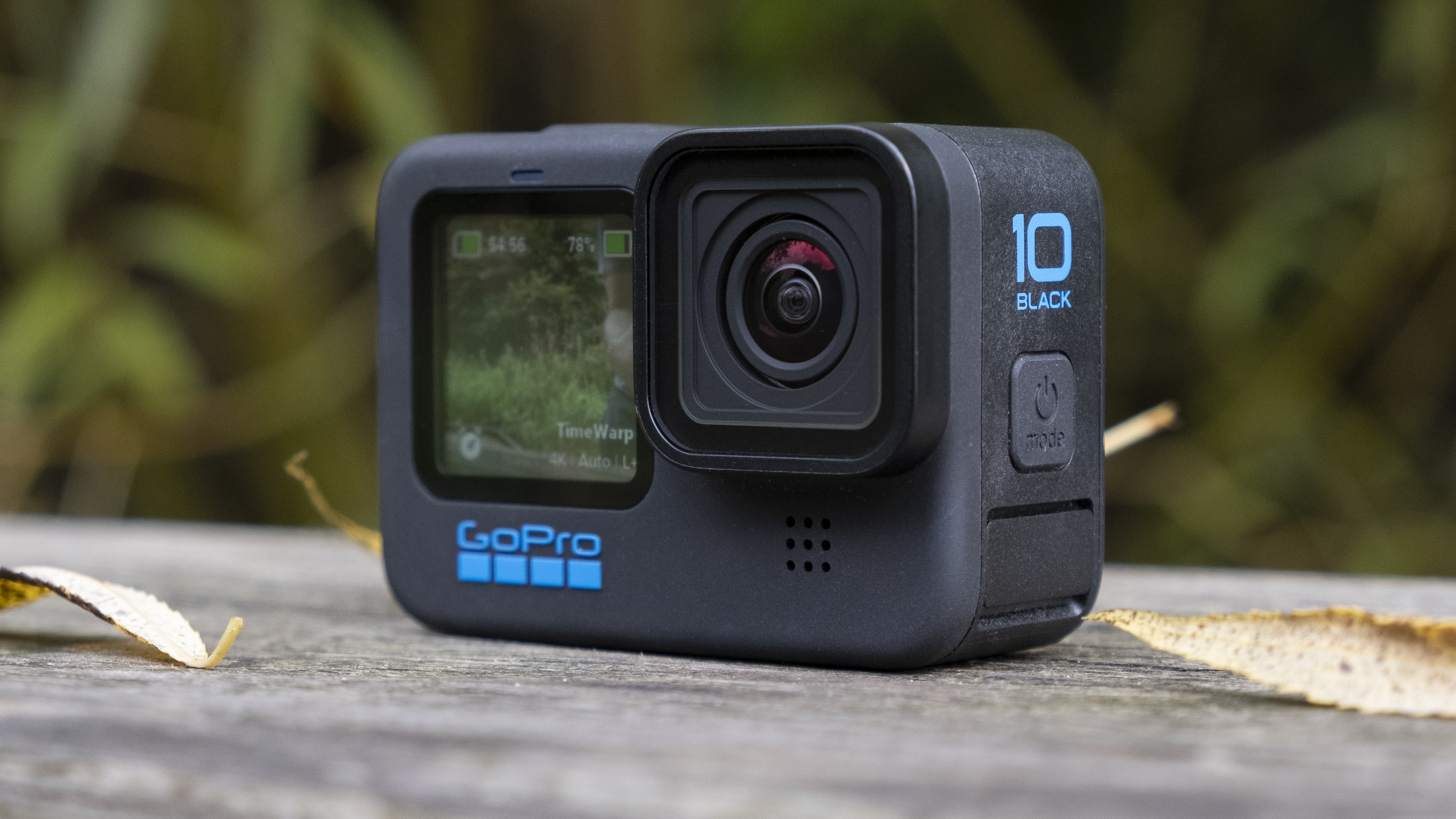
If you're not familiar with the Hero 9 Black, here's a quick refresh of the other design features that the Hero 10 Black has inherited. There's a 1.4in front LCD for vloggers, which GoPro says is now a little smoother when showing movement than before, thanks to some higher frame-rates powers by its GP2 processor (more on that later). This screen is so small though, we honestly couldn't tell the difference from its predecessor.
Far more noticeable is the improved 2.27in rear touchscreen. Again, GoPro says this has "improved touch sensitivity", but the real difference comes from the power of its GP2 processor. The Hero 9 Black's sluggish, unresponsive rear screen was one of our biggest criticisms of that model, and while it did improve with a recent firmware fix, it's still nowhere near as snappy as the Hero 10's touchscreen.
Let's be clear – this is how the Hero 9 Black should have performed from the outset, so it's hardly a win for its successor. But the faster startup times (it's typically ready to go in under five seconds, compared to eight seconds for the Hero 9 Black) and smartphone-like snappiness do make it far more enjoyable to use than last year's often frustrating experience.
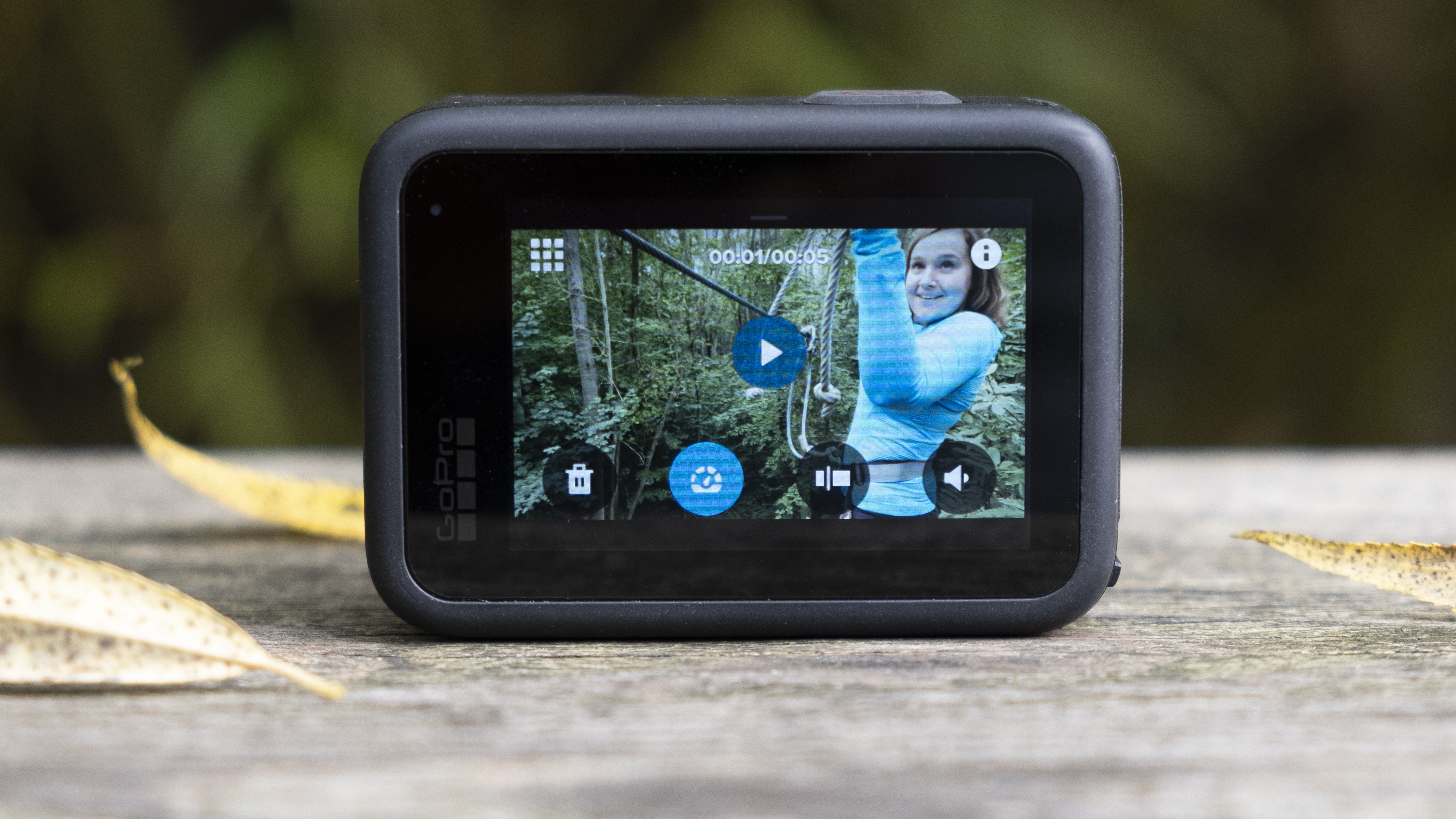
Open the Hero 10 Black's side door and you'll find the same 1,720mAh battery as the one used by the Hero 9 Black. Like the 1.4in front LCD, this was another change that was introduced by its predecessor, so it's something to be wary of if you're upgrading from an older GoPro – your older, 1,220mAh batteries won't work in here.
Lastly, flanking the battery are a microSD card slot and USB port. The latter is obviously used for charging, but can also be used to wirelessly fling footage to your phone (this is about 50% faster than wireless transfers). It's a simple enough process with Android phones, which just need a USB-C to USB-C cable, but iPhone users will need a Lightning-to-USB adapter, plus the USB-C cable.
Overall, then, the Hero 10 Black is a hardy, pocket camera that's waterproof down to ten meters and now feels a bit more polished than its predecessor.
Features
- Same 23.6MP, 1/2.3-inch sensor as the Hero 9 Black
- New GP2 processor unlocks significant boosts to shooting modes
- Now possible to livestream with HyperSmooth stabilization
Last year, the GoPro Hero 9 Black introduced a new image sensor. It was the same size sensor as previous GoPros (1/2.3-inch), but had a higher resolution that allowed it to shoot 5K video for the first time. The Hero 10 Black has that same image sensor, but pairs it with a new GP2 processor that unlocks some handy new talents.
The GP2 chip is the first big processing upgrade we've seen in GoPros for four years and it's long overdue. The GP1 struggled to cope with the increased demands placed on it by the Hero 9 Black's dual screens and higher-resolution sensor, but its successor is behind pretty much all of the improvements you'll find in the Hero 10.
What are these improvements? Alongside the aforementioned boosts to start-up times and touchscreen performance, there are also some useful new frame-rate modes that make it a more versatile action camera. You can see a summary of the new modes in the table below, but the particularly fun ones are the slow-motion options – including a long-awaited 4K/120p mode.
| GoPro Hero 10 Black | GoPro Hero 9 Black | |
| Video (up to) | 5.3K/60p | 5K/30p |
| Video (up to) | 4K/120p | 4K/60p |
| Video (up to) | 2.7K/240p | 2.7K/120p |
| Photos (up to) | 23MP | 20MP |
| Stabilization | HyperSmooth 4.0 | HyperSmooth 3.0 |
| Frame grabs | 19.6MP from 5K 4:3 video | 12MP fro 4K 4:3 video |
The headline video improvements are those high frame-rate modes, but there are some more subtle ones, too. GoPro's been doing some algorithmic tinkering, and its GP2 chip brings local tone mapping (an HDR processing technique for improving dynamic range) from its photo mode to video, too.
In theory, this enhances contrast in specific areas of the video (rather than globally, across the whole frame) to bring out more detailed textures. In a similar vein, GoPro says it's improved its '3D noise reduction' to boost the Hero 10 Black's low-light performance in dimly-lit scenes (think woodlands, dusk or your house).
Do these work? In a side-by-side comparison with the Hero 9 Black using the same settings, we did see a noticeable improvement in the definition of fine details (trees and grass, for example) on the Hero 10 Black. Look closely, and its predecessor looked a little smudgy by comparison. This may only be noticeable to pixel-peepers though, and the noise reduction improvements were less obvious. It's a subtle rather than dramatic difference.
Probably more useful to most people are the final GP2-related improvements: better in-camera horizon leveling and HyperSmooth 4.0. The option of automatic horizon leveling, which keeps your footage level even if you're rocking from from side-to-side, used to only be available in GoPro's app. The Hero 9 Black introduced an in-camera version, but the Hero 10 Black's horizon-leveling skills are much more powerful with the ability to correct footage that's been skewed by 45 degrees, rather than just 27 degrees.
This is a handy feature for mountain bikers or skiers who want smooth footage that won't give viewers motion sickness. Another bonus on this front is HyperSmooth 4.0, which brings the stabilization's powerful 'High' mode to the Hero 10 Black's most demanding modes (5.3K/30p, 4K/60p and 2.7K/120p). Rivals like the Insta360 One R 1-Inch edition might have trumped GoPro with larger 1-inch sensors, but in our experience HyperSmooth remains the best form of stabilization on any action cam.
Finally, if you've been thinking of using a GoPro as your live-streaming camera, the Hero 10 Black brings one other upgrade here – you can now stream with HyperSmooth 4.0 stabilization. Unfortunately, there are still all sorts of restrictions on live-streaming with a GoPro, depending on your preferred platform.
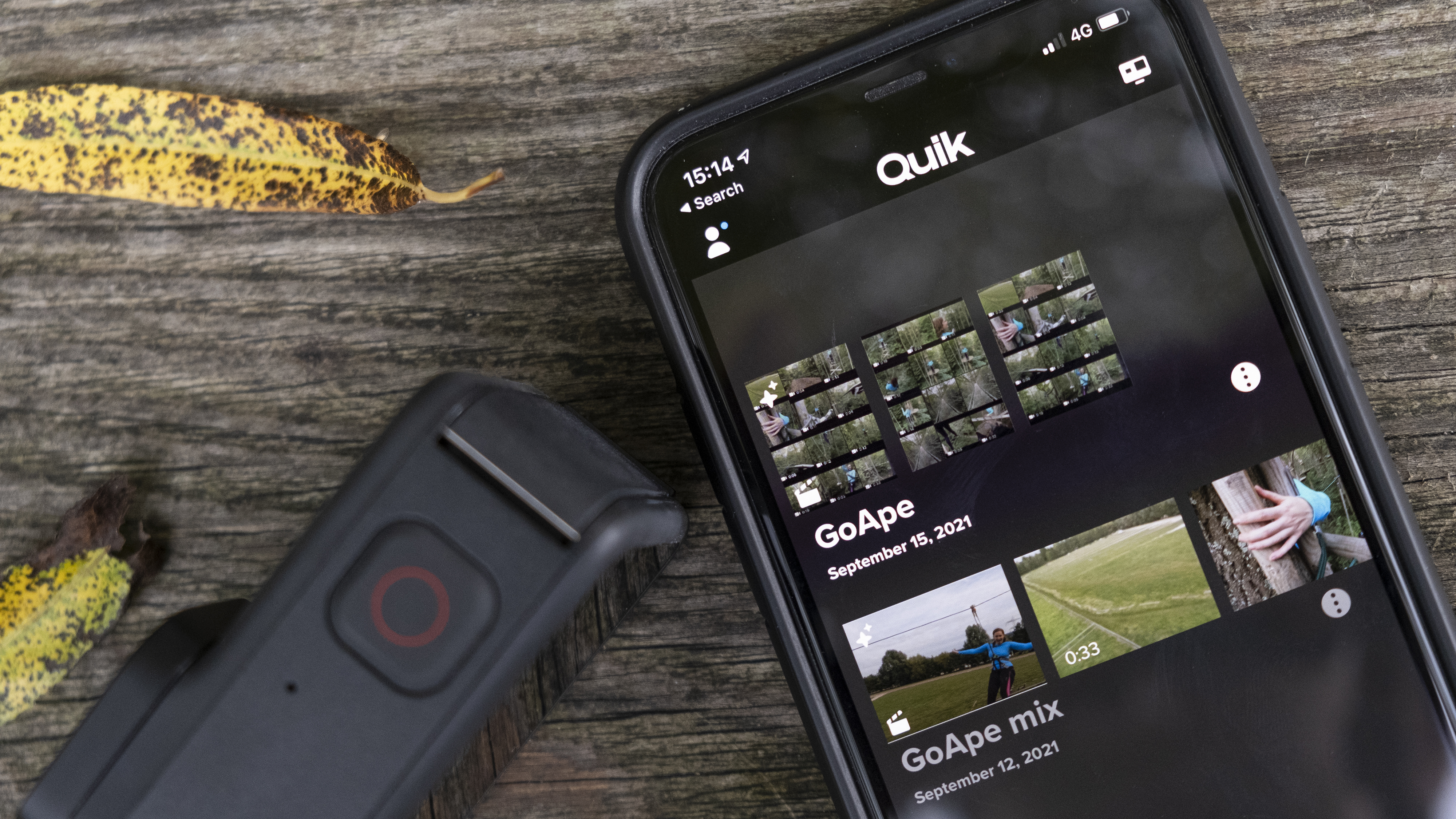
For example, Twitch is iOS-only and YouTube requires you to have a channel with 1,000 subscribers. You can also only create a private live-streaming link to send to friends if you're a GoPro subscriber. But the addition of HyperSmooth certainly makes it a much more useful tool for those who want to create action-packed streams with lots of movement.
Naturally, the GoPro Hero 10 Black also inherits all of the special shooting modes we saw on the Hero 9 Black. These include TimeWarp 3.0 (one of our favorite modes, which creates a stabilized timelapse film) and 'Power Tools', which were first teased in GoPro Labs. This group of features, which still feel a little beta, bring some specific modes that are collectively very useful.
One of our favorites, 'Hindsight', constantly buffers video so that when you press the shutter button, you can get the previous 15 or 30 seconds of video. No longer will your dog's impromptu japes go unrecorded. Another 'Power Tool' includes 'scheduled capture' for leaving your GoPro out to capture the sunrise. Not exactly earth-shattering, but it all boosts the Hero 10 Black's versatility. Though many of these are also available on the older Hero 8 Black once you've loaded the GoPro Labs firmware onto the camera.
Performance
- Unchanged battery life means it's worth carrying spares
- Built-in microphones are the same as on the Hero 9 Black
- New slo-mo modes are a bonus for cut scenes
While the Hero 10 Black's GP2 processor does make it a more polished, fun camera to use than its predecessor, some aspects of its performance are still typical GoPro.
One of these is battery life and overheating. It has the same battery as the Hero 9 Black, whose 1,720mAh capacity is larger than all previous GoPros. But much of that extra capacity is drained by the Hero 10 Black's more demanding dual screens and high frame-rate modes.
In our battery test, with the camera shooting a continuous 4K/30p clip with HyperSmooth on and the screen brightness at 50%, we managed to get a total of 72 minutes' recording from the Hero 10. This included two breaks for overheating, when the camera shut down under the strain.
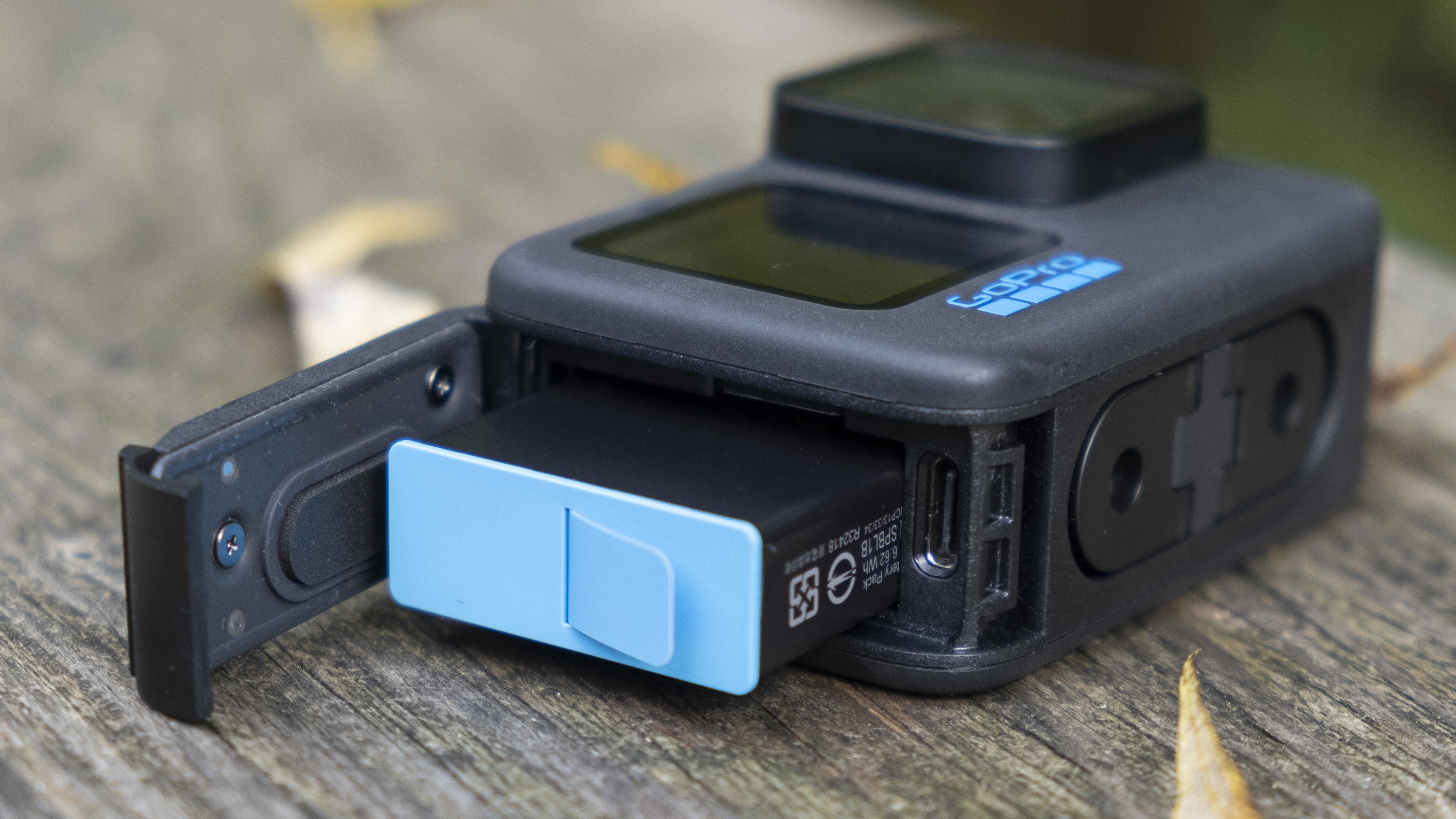
This is actually a little less than we got last year for the Hero 9 Black and similar to the Hero 8 Black, so it's clear that the old GoPro adage is true – make sure you carry a spare battery or two with you. In a more real-world test, during a visit to a GoApe adventure park, a fully charged Hero 10 Black gave us three-and-a-half hours before conking out. That was a taxing afternoon for it, with lots of menu swiping and different frame-rates, but this is also a typical day out for a GoPro.
Another traditional GoPro weakness, audio, is also unchanged from the Hero 9 Black. The microphones do produce acceptable sound quality in quieter environments, while voice isolation and the handling of wind noise are certainly superior to older GoPros. But if you want to guarantee audio that matches your video quality, then we'd recommend getting the Media Mod accessory and either plugging in a lavalier mic or getting a wireless option like the Rode Wireless Go II.
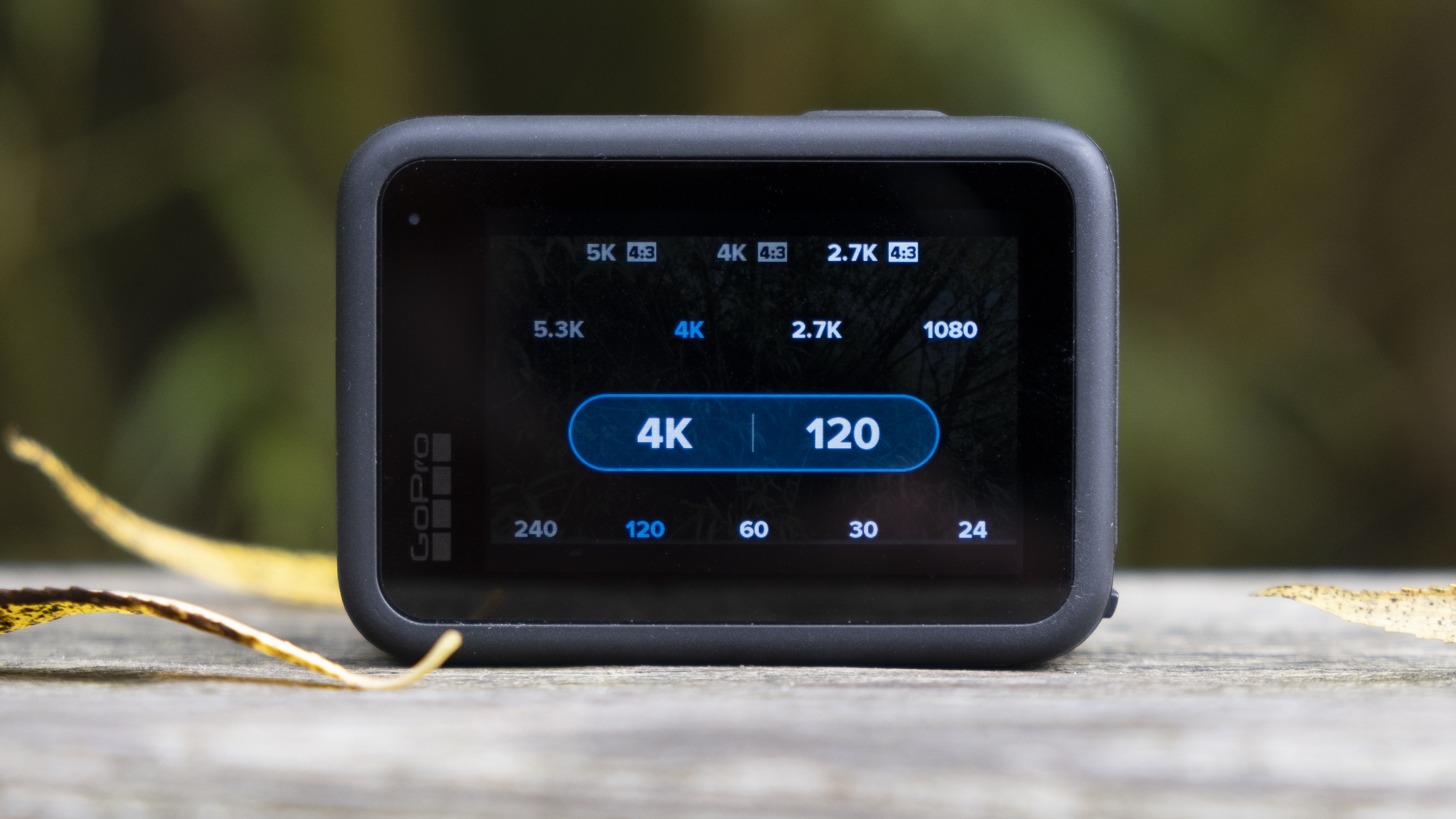
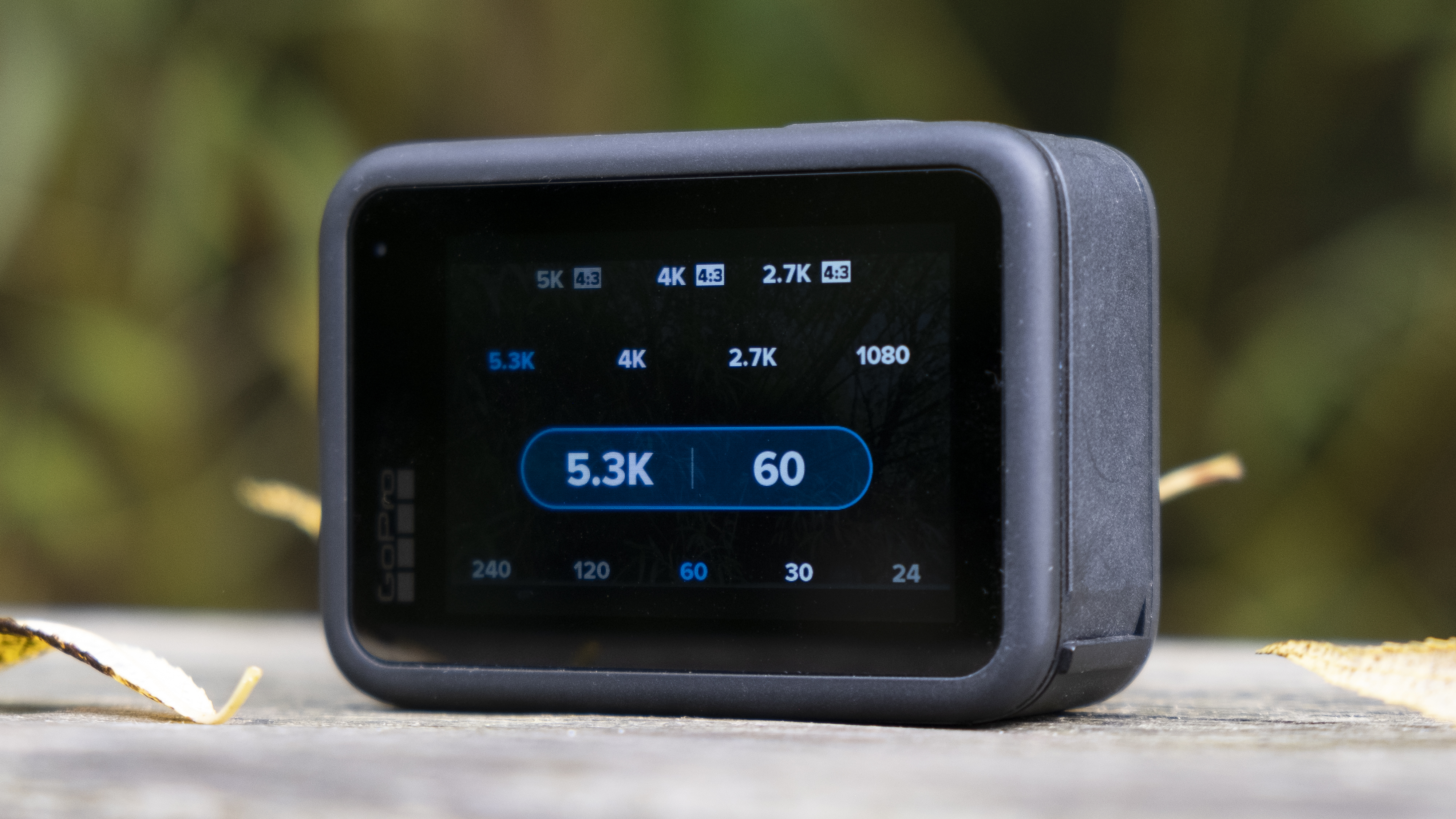
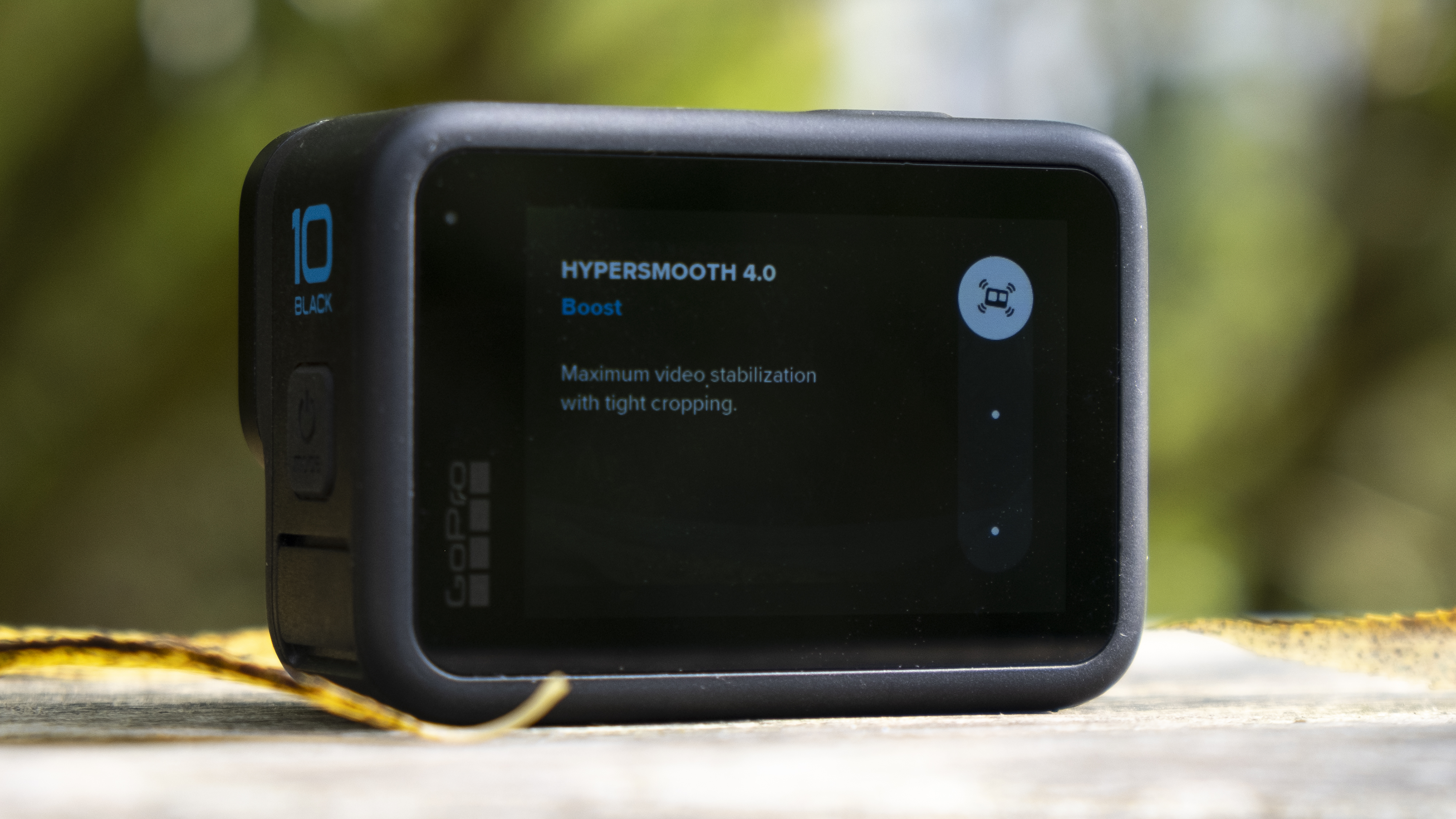
On the plus side, though, the Hero 10 Black's new slo-mo modes (4K/120p and 2.7K/240p) are a lot of fun and a great way to bring a change of pace to your social media videos. As always, there is a noticeable quality drop when shooting in these modes, particularly if you find yourself in anything other than bright sunlight.
But the versatility these modes give you, particularly when combined with horizon-leveling and HyperSmooth stabilization, makes them one of the main reasons to upgrade from an older GoPro.
Video and image quality
GoPro has made some changes to the default video settings on the Hero 10 Black. The action cam maker has seemingly out-grown the signature saturated look it's leaned towards previously, instead going for a more natural style out of the box.
There are actually now three color settings to choose from. Previously you either had the option of 'GoPro' color profile (which was punchy, bold colors) and a 'flat' one that you could grade afterwards. But now there's a 'Natural' profile, which is the new default, and we're pretty big fans of it.
GoPro has also dialed down the 'sharpness' to medium by default (another good move), but we tended to shoot with it on 'low' and with the bit-rate set to 'high' (or 100Mbps) for maximum image quality. When compared to footage shot we on the Hero 9 Black with the same settings, the results were similar, but with subtle improvements that are likely down to that new local tone mapping.
Still, the Hero 9 Black had already made the big advances in areas like detail over older GoPros with that new sensor, and you're unlikely to notice a huge difference here unless you're really pixel-peeping. The 5K/60p mode is a nice-to-have, if not ideally suited to action scenes due to the more limited stabilization that's available, but it's the new slo-mo modes that are the most fun.
There's undoubtedly still a softness to the video in the Hero 10's slower frame-rates of 120p and 240p (particularly the latter), but the option of shooting 4K/120p and 2.7K/240p lifts them from novelty status to something genuinely usable. GoPro's HyperSmooth also remains the best you'll find on an action cam, while the boosts to horizon leveling are another welcome bonus.
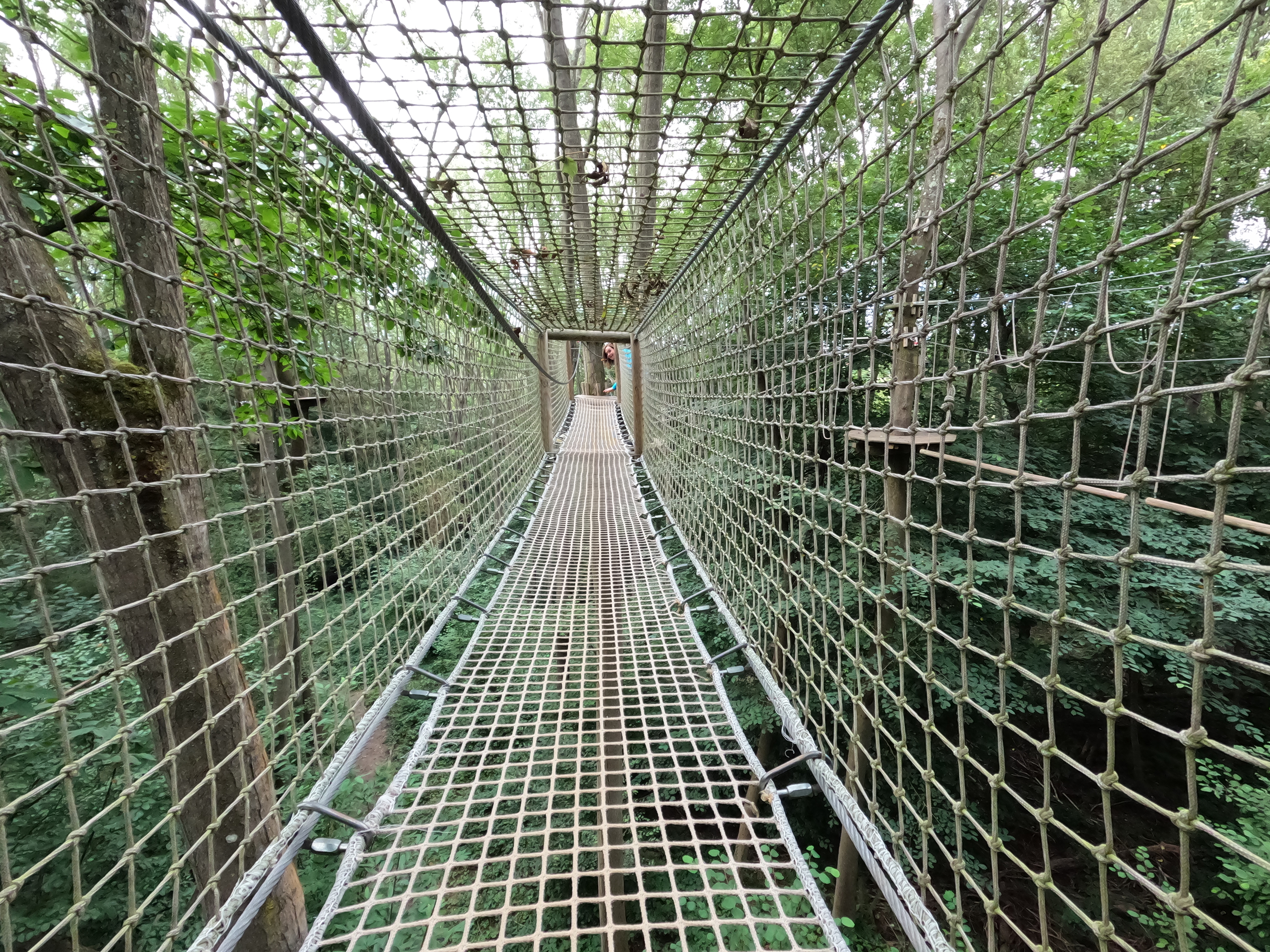

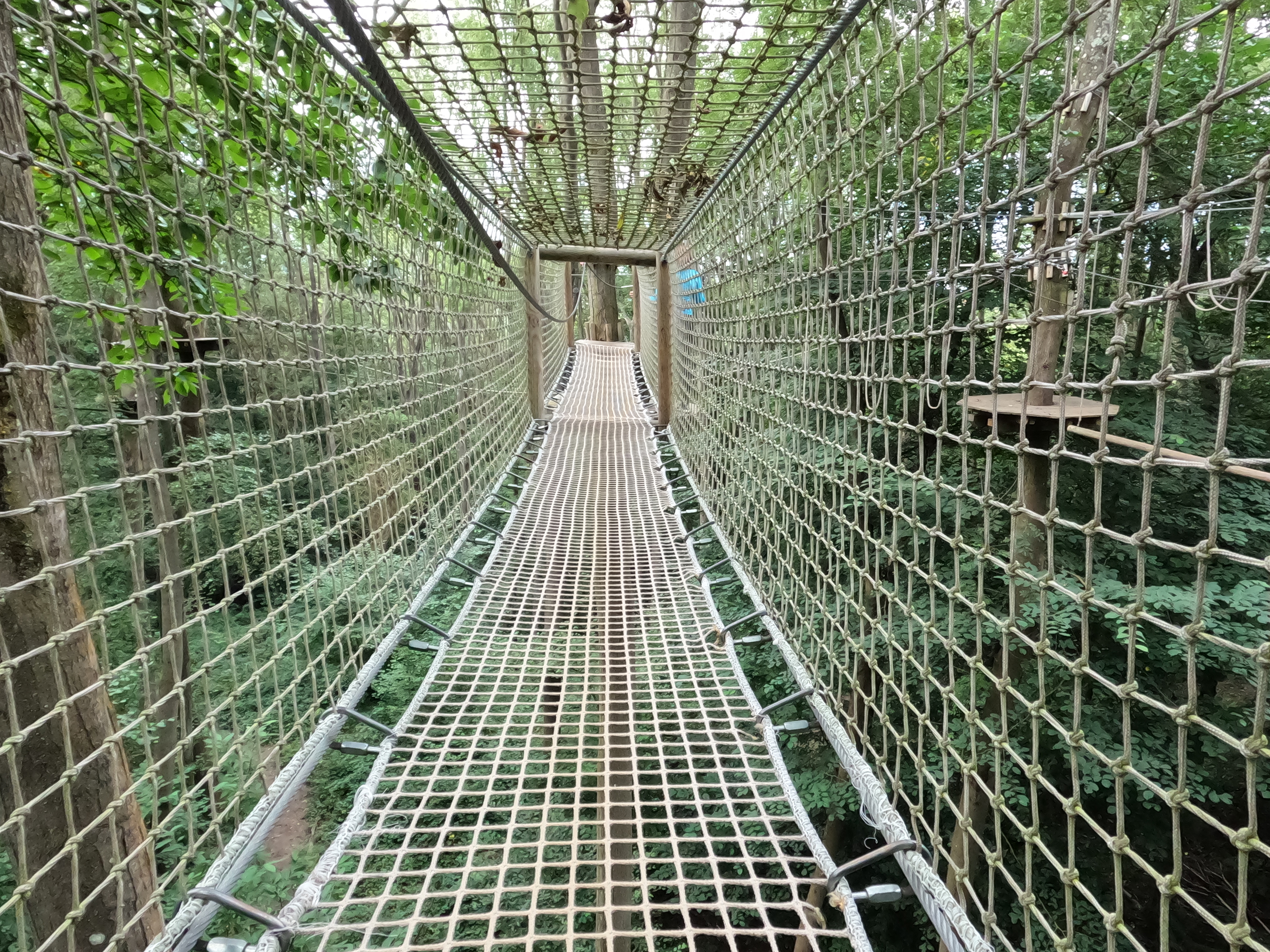
On the other hand, not many people buy a GoPro to shoot stills – and while the Hero 10 is a passable, waterproof stand-in for your smartphone, it has been left a little behind on this front. In good light, the results are pretty crisp and colorful, while SuperPhoto can help you regain some highlight details from areas like sky.
But the 3MP resolution boost from the Hero 9 Black won't be noticeable to most, and in tough scenes – including low light ones – it simply can't compete with the computational pipelines of Apple, Google and Samsung. You do get the option to shoot in raw, but this is only available in the 'wide' fisheye view and shadow recovery is limited with a 1/2.3-inch sensor.
Perhaps the more sensible approach to GoPro snapping is to simply accept the sub-smartphone quality and embrace the convenience of 'frame grabs', which now let you grab slightly improved 15.8MP stills from 5.3K video (or 19.6MP from 5K 4:3 footage). The kind of shots you get from doing this are unlikely to be found in your phone's camera roll, and the GoPro's ability to venture into dangerous territory remains one of the main reasons to buy one.
Should I buy the GoPro Hero 10 Black?

Buy it if...
You want the most polished, versatile GoPro ever
The Hero 10 Black isn't one of those seismic leaps that GoPro's occasionally make, but it is a sensible step up from its predecessor. Its touchscreen and overall usability has been significantly improved, while the new video frame-rates make it an ideal social media workhorse.
You enjoy shooting slo-mo videos
While there have been small improvements to the Hero 10 Black's video quality, the more fun upgrades are its new slo-mo frame-rates. The 4K/120p mode, in particular, is ideal for shooting cut-scenes or family frolics, and is a key advantage over the rest of the GoPro family.
You need a tough, waterproof vlogging camera
If you like to shoot a lot of videos to camera, and also enjoy traveling to places with inclement weather or a high chance of mud, then the Hero 10 Black could be your ideal vlogging companion. Its front screen is useful for framing shots, while the Media Mod is on hand to serve up access to a higher-quality microphone.
Don't buy it if...
You want truly cinematic video
While it is possible to squeeze some excellent video from the Hero 10 Black with the right settings (the 'high' bit-rate mode, low sharpening, and 'natural' color profile), it still tends to have that wide-angle look without any pleasing bokeh. If you want a more cinematic look, get a compact APS-C or full-frame camera.
You're looking for an action cam bargain
The Hero 10 Black is many things, but cheap isn't one of them. That's understandable, it's the most feature-packed, user-friendly action cam out there. But if you're looking for an affordable workhorse that can still shoot decent 4K video, then there are some better-value options in our best cheap action camera guide.
You already have the GoPro Hero 9 Black
For those with older GoPros from the Hero 6 Black or earlier, the Hero 10 Black would be a huge upgrade. But the situation is more complex for owners of last year's flagship – while we've really enjoyed the Hero 10's enhanced usability and slo-mo modes, it's otherwise largely the same action cam as the Hero 9 Black.
- These are the best action cameras you can buy
0 comments:
Post a Comment